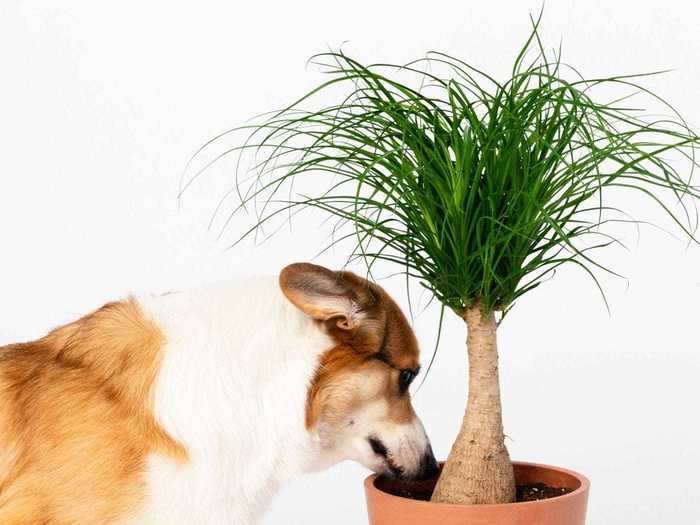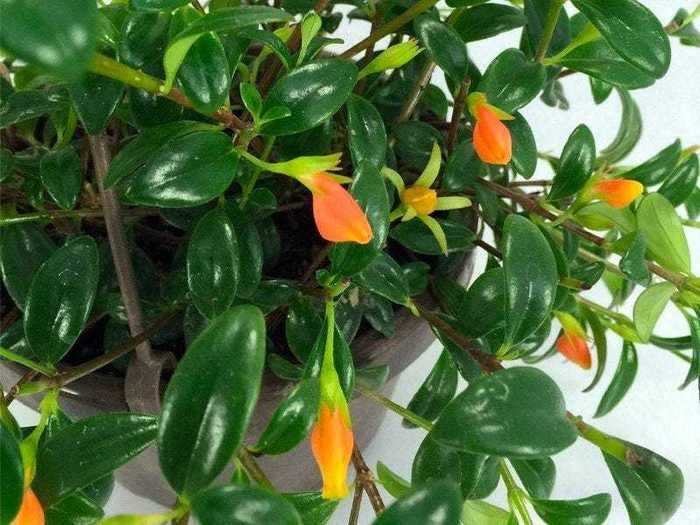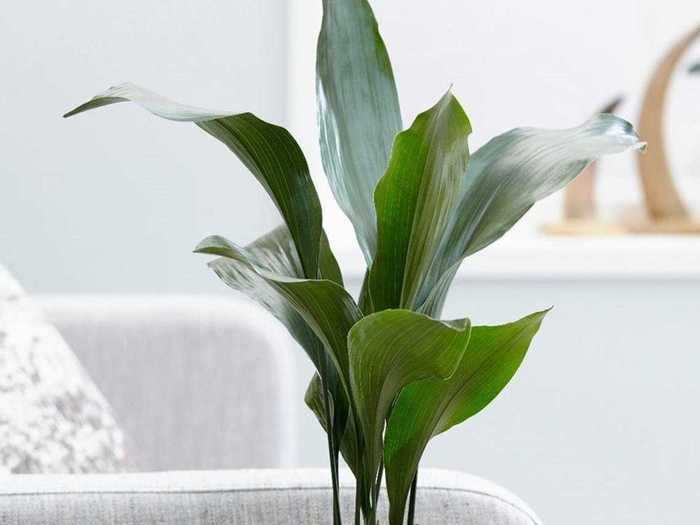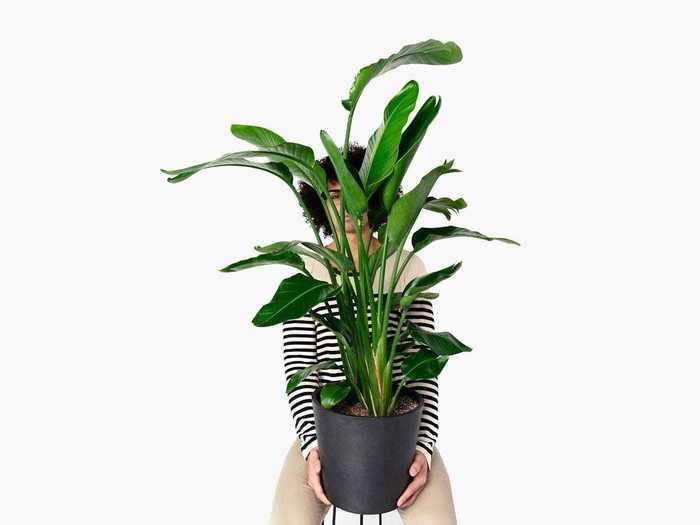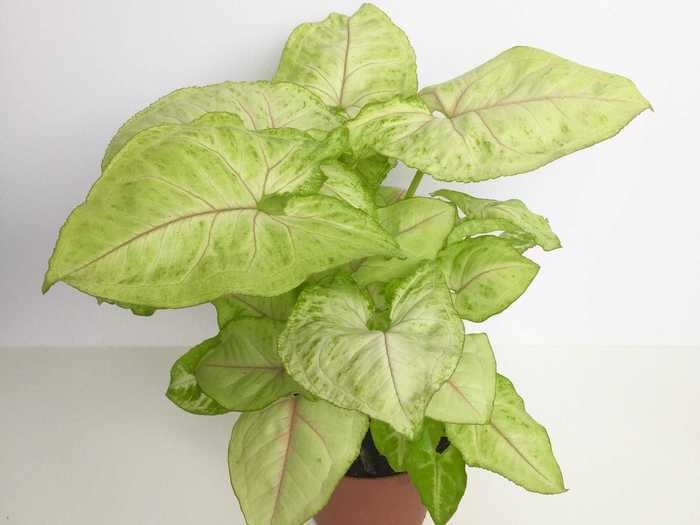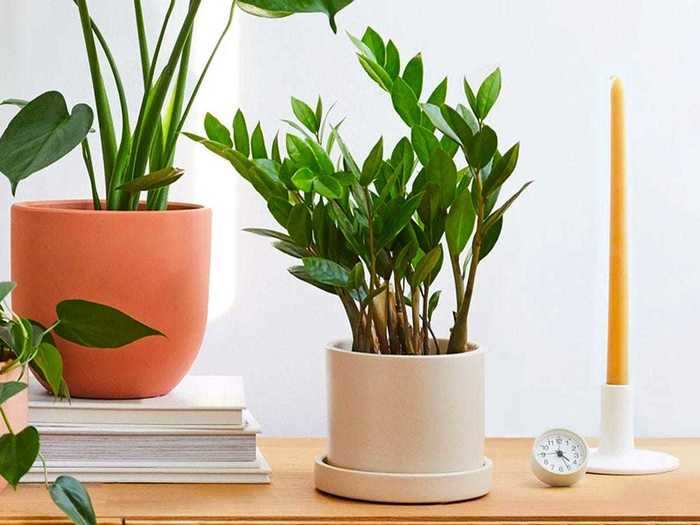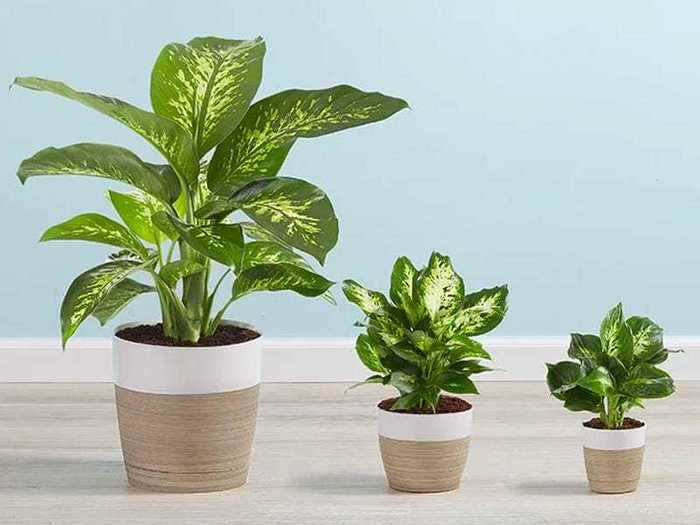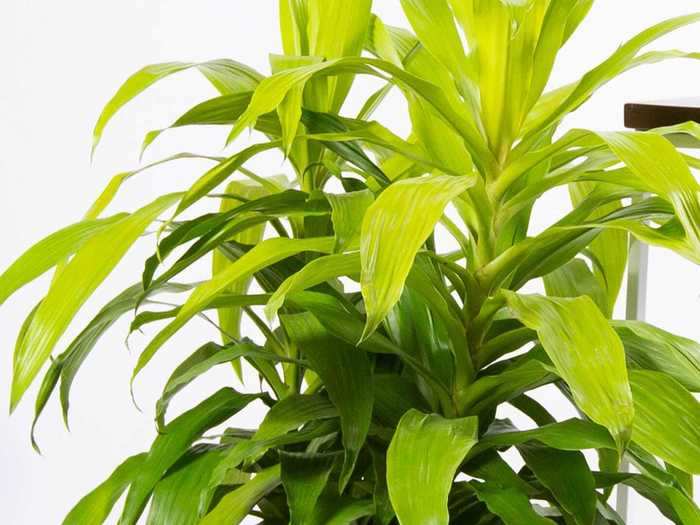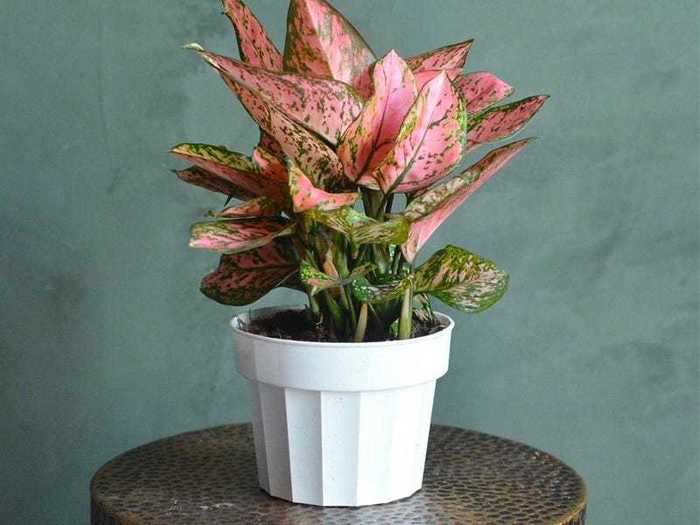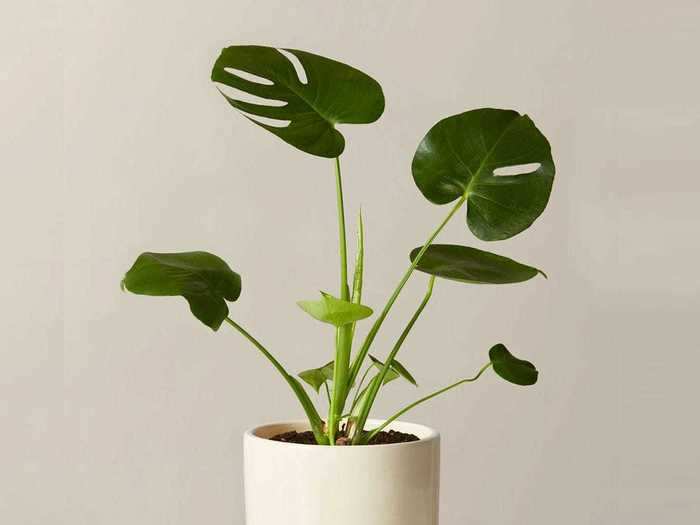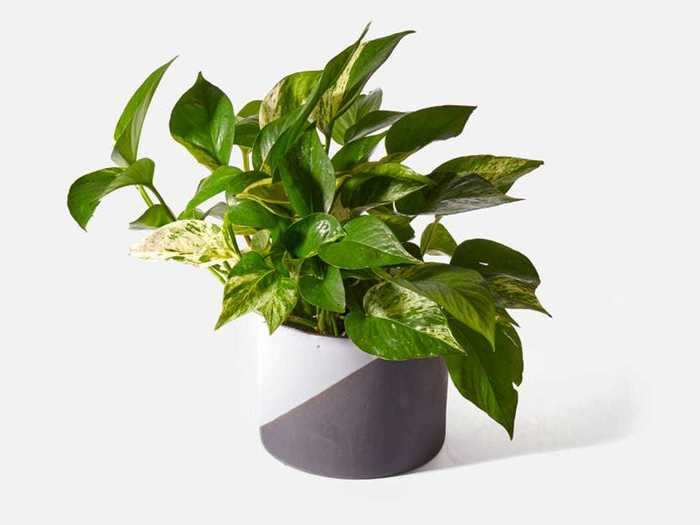When you buy through our links, we may earn money from our affiliate partners. Learn more.
- If your thumb is a little less than green, it doesn't mean you can't look after houseplants — it just means you need to choose plants that are forgiving.
- Here are 13 houseplants that are hard to kill and look great in any space, according to urban farmer Nick Cutsumpas.
- Read more: Plant delivery startup The Sill makes it easy to learn about which plants are right for your home — here's how it works
Nothing quite matches the natural beauty and peaceful vibe of a houseplant. But the benefits of plant ownership go far beyond just looking pretty. Houseplants can have many positive effects on you and your home environment, including helping boost oxygen levels, making us more productive, and even helping us heal faster.
Growing houseplants, however, can a challenge for many people. Watering can be a mystery — too much water will kill your plant just as easily as too little. And what about light? Are there any plants you can grow in your dim bathroom or bedroom?
We consulted urban farmer and plant expert Nick Cutsumpas to learn more about what makes a good houseplant and how to pick the right one for your space.
How to choose an easy houseplant
Before you buy a plant, it's imperative that you take inventory of your space. "Most people fail to keep their plants alive because they choose plants that weren't capable of surviving in their homes in the first place," Cutsumpas says.
To make a more informed decision, he suggests you assess the following:
- Lighting and exposure: Do you have an abundance of natural light or is your space rather dim? If you don't have a lot of natural light, there are plenty of beautiful low-light plants that will thrive in your space. But you don't have to give up on the plant of your dreams either. Cutsumpas suggests investing in a grow light to supplement low-light situations.
- Heat and humidity: Different plants require different levels of humidity to thrive. If you live in a very dry climate, you may need to compensate with a humidifier if you're looking into a high-humidity plant. Be cognizant of where you are placing your plants as well. A high-humidity plant won't do well next to a radiator blasting dry air, for example.
- Lifestyle: Be realistic about how much time you have to commit taking care of your plants. Do you travel frequently? Will you likely forget to water your plants on schedule? If you lead a busy lifestyle or don't have the patience to keep up with a high-maintenance plant, go for an easier-to-care-for starter plant, like the ones we've listed below.
After you've taken stock of your space and your lifestyle, you'll have a sense of what plants will do best in your environment. Next, it's the fun part — finding a plant you love.
With the help of Cutsumpas, we've assembled this guide of 13 houseplants that are fairly easy to look after — even for those with a black thumb.
The 13 easiest houseplants you can buy:
Click each link to learn about the specific plant, or keep reading for a look at all of them.
Updated on 5/18/20 by Remi Rosmarin: Prices and links are accurate as on 5/18/20, and we interviewed urban farmer Nick Cutsumpas.
Read the original article on
Business Insider
Ponytail palm
Bloomscape
Who doesn't want a whimsical
ponytail palm tree in their home?
The ponytail palm looks more like a Dr. Seuss creation than it does a succulent, which it is despite its name. It has a large, swollen base that stores water, and a mop-like "head" of droopy leaves atop a bare trunk. It's also called an elephant's foot — another fitting name for such a whimsical plant. If you're looking for an extremely easy-care indoor tree, this is one of the best plants you can choose.
Botanical name: Beaucarnea recurvate
Water: Your ponytail palm can go for several weeks without water, but give it a drink once a month or so.
Light: While the plant prefers bright light, it's very forgiving and thrives even in a moderate-light location.
Size: Given enough time, the ponytail palm can reach a height of six feet or more, but more often, it remains under four feet.
Toxic to pets? Non-toxic to both cats and dogs.
Where to buy:
Goldfish plant
Etsy
If you want to have some flowers in your home, the
goldfish plant and its subtle blooms will do the trick.
While some flowering houseplants are temperamental, the goldfish plant – because its orange or yellow flowers are somewhat goldfish-shaped – is an easy-going plant that blooms almost all year long when happy, and looks good even without its bright, waxy flowers. This is a drooping plant that looks best in a hanging basket or perched on a column or high cabinet where its cascading growth pattern can be appreciated.
Botanical name: Columnea gloriosa
Water: Although not entirely drought-resistant, the goldfish plant can dry out a bit between waterings.
Light: You'll get the most blooms if you set your plant in a window that gets lots of light, but not intense heat.
Size: Generally, the goldfish plant reaches one to two feet in length, but it's easy to prune it back if you'd like to keep it shorter.
Toxic to pets? Mildly irritating to both cats and dogs.
Where to buy:
Cast iron plant
Etsy
The
cast iron plant lives up to its name by being super hardy.
With a common name like "cast iron plant," you know this houseplant is hard to kill, even for those with a less-than-green thumb. The plant has an upright growth pattern, and long, dark green leaves with a somewhat pointed shape.
Botanical name: Aspidistra elatior
Water: While the cast iron plant prefers evenly moist soil, it will tolerate occasional drought.
Light: This is another excellent plant for rooms that don't get a lot of natural light.
Size: Although it grows very slowly, the cast iron plant can reach an eventual height of three feet.
Toxic to pets? Non-toxic to both cats and dogs.
Where to buy:
Bird of paradise
Bloomscape
If you're looking for height, the
bird of paradise is a big, beautiful plant that's low maintenance.
The bird of paradise gets its name from the colorful flowers it produces, which look like birds in flight. Native to South Africa, the tropical plant likes humid conditions and bright light. Despite its statement-making presence, the plant is rather low-maintenance. Cutsumpas suggests it for beginners because it can tolerate periods of drought and indirect light.
Botanical name: Strelitzia reginae
Water: Water weekly to keep soil moist, but never overly wet.
Light: High to medium light, particularly in a spot with direct sunlight.
Size: Indoors, the bird of paradise can grow up to five feet tall and spread about three feet wide.
Toxic to pets? Toxic to both cats and dogs.
Where to buy:
Arrowhead vine
Arrowhead vine is a pretty, leafy plant that can grow quickly.
This popular houseplant has very attractive arrow-shaped leaves. There are many varieties with a wide range of colors, including bronze, green, cream, and pink. The plant has a bushy shape when young, but starts to vine as it matures. Often, the leaves start changing from arrow-shaped to lobed as the plant ages, as well.
Botanical name: Syngonium podophyllum
Water: Give your arrowhead vine a drink as soon as the soil surface feels dry.
Light: This is a great plant for low-to-moderate-light rooms.
Size: The plant can reach three feet in size but will tend to spread out and vine, rather than growing upright to its ultimate height.
Toxic to pets? Yes, both cats and dogs.
Where to buy:
ZZ plant
The Sill
The
ZZ plant is as close to indestructible as a living plant can be.
Somewhat new to the buzzy houseplant scene, the ZZ plant is mighty hard to kill. The stiff, thick, upright leaves grow very evenly up the branches, and are very shiny, giving the plant an almost artificial look. The ZZ plant is a great choice for anyone brand-new to indoor gardening or growing houseplants.
Botanical name: Zamioculcas zamiifolia
Water: As a succulent, the ZZ plant is drought-resistant. Let the soil dry between waterings, or the plant will develop root rot.
Light: You'll find the ZZ plant very easy-going in terms of light; it doesn't like it too bright, and will tolerate fairly dim light, but does best with filtered sun.
Size: The ZZ plant grows very slowly. Its eventual size is two to three feet.
Toxic to pets? Yes, both cats and dogs.
Where to buy:
Dieffenbachia
Dieffenbachia in different sizes.
1-800-Flowers
Dieffenbachia is a cute, leafy plant with attractive leaves.
Dieffenbachia (pronounced diff-in-bach-ia) by the common name of "dumb cane" due to the sap's ability to inflame the throat and make it difficult to speak. Humorous nicknames aside, it's a very attractive and popular houseplant with many varieties. Most have variegated leaves and leaf edging in various shades of green, white, and yellow.
Botanical name: Dieffenbachia sp.
Water: It's easy to kill a dieffenbachia by overwatering, but it doesn't like to get too dry, either. Let just the surface of the soil dry out before giving it a drink.
Light: Dieffenbachias don't like it too bright, so keep your plant where it will receive filtered or fluorescent light.
Size: Although they can eventually reach around six feet, most dieffenbachias stay between two to three feet tall.
Toxic to pets: Yes, both cats and dogs.
Where to buy:
Dracaena
Bloomscape
Dracaena comes in many varieties, all of which are hardy.
Dracaena (pronounced drah-seen-aw) is actually the genus name of a diverse and large group of popular houseplants, most of which are easy to grow. They all have a central stem sprouting long, pointed leaves and many are variegated with red, yellow, or white stripes or blotches.
Some of the most popular are the corn plant, "lucky bamboo," (which despite the name is a dracaena, not a bamboo), marginata, Janet Craig, and reflexa. You'll find dracaenas with open and airy growth patterns, tightly packed growth patterns, and everything in between. Many, such as the corn plant and marginata, can be trained to grow as indoor "trees."
Botanical name: Dracaena sp.
Water: Keep your dracaena's soil moist, but never soggy.
Light: Dracaenas appreciate bright, but filtered, light. Keep them out of direct sunlight.
Size: There are dracaena species only a foot or so tall, and others easily trained into eight-foot indoor trees, plus everything in between.
Toxic to pets? Yes, both cats and dogs.
Where to buy:
Spider plant
Bloomscape
Spider plants are classic houseplants that are easy to care for.
If you still associate spider plants with the 1970s and macramé hangers, well, they're back, but sans macramé this time around. Spider plants, which are another houseplant shown to excel at air purification, are attractive plants with an airy growing pattern and long pointed leaves that droop downward. The "Curly" variety has wavy, tangled leaves, but the same white and green coloring as the regular spider plant.
Botanical name: Chlorophytum comosum
Water: Keep the soil moist, but not soggy, and your spider plant will stay happy and healthy.
Light: A medium-to-bright location is best.
Size: Spider plants have a drooping growth pattern, and typically don't get much taller than one foot, although their stems can hang down further.
Toxic to pets? Non-toxic to both cats and dogs.
Where to buy:
Chinese evergreen
Etsy
One of the best houseplants for purifying the air,
Chinese evergreen is also very easy to grow.
There are lots of beautiful varieties of the Chinese evergreen: "Silver Queen" is one of the most common, and has silvery leaves with darker green blotches and edging. A strikingly gorgeous variety is "Red Siam," which has hot pink and green leaves.
Chinese evergreen grows in a mounded shape and has long, somewhat pointed leaves.
Botanical name: Aglaonema
Water: Chinese evergreen is a very tolerant plant; as long as you don't let it dry out completely for long, it will tolerate fairly infrequent watering, although it will do best on a regular schedule.
Light: This is one of the best houseplants for low-light situations.
Size: Your Chinese evergreen can eventually reach around three feet tall and equally wide.
Toxic to pets? Yes, both cats and dogs.
Where to buy:
Snake plant
Léon & George
A
snake plant will live on even if you forget to water it now and then.
Also called mother-in-law's tongue, the snake plant has been popular since Victorian times. This super-easy-to-grow houseplant provides an extra bonus to its attractively upright, angular shape. Some varieties are dark green and mottled all over, while others have a yellow or white border around the edges of the green leaves.
Botanical name: Sansevieria trifasciata
Water: The snake plant is fairly drought-resistant; in fact, it's easier to kill by overwatering than underwatering. Still, it requires a drink whenever the soil starts to feel dry.
Light: One of the most forgiving plants when it comes to light, your snake plant will survive just about anywhere other than the darkest of rooms. But its preference is for bright light without direct sunlight.
Size: The upright leaves can reach four feet tall, although most remain shorter.
Toxic to pets? Yes, both cats and dogs.
Where to buy:
Monstera
The Sill
This tropical plant may look intimidating, but
monstera deliciosa is easy to grow in almost any environment.
Monstera deliciosa is a tropical plant with a distinct appearance. Its broad green leaves are filled with natural holes (also known as fenestrations), which is why it's also known as the "Swiss cheese plant".
Monsteras are climbers, so you'll want to give them some space to grow. Cutsumpas recommends the plant for beginners because they have a wild, vibrant look but are surprisingly easy to care for. "Monsteras are a versatile centerpiece capable of surviving in many indoor environments," he says.
Botanical name: Monstera Deliciosa
Water: Water monstera every one to two weeks. Let the soil dry out slightly between each watering. Increase the frequency of watering if the plant is in direct sunlight.
Light: Monstera does best in bright to medium indirect light. It's not suited to be directly in bright light, but it can acclimate to withstand it.
Size: Size differs among the specific species. In the wild, monstera can grow over 60 feet tall, but in your home, they likely won't get taller than eight feet.
Toxic to pets? Yes, both cats and dogs.
Where to buy:
Pothos
UrbanStems
Probably the easiest houseplant to grow,
pothos is a perennial favorite.
Pothos is a climbing plant, although it often forms a mound of heart-shaped leaves before spilling over into trailing vines. It's also remarkably easy to train around topiary forms, such as hoops, stakes, pillars, and arches.
There are lots of varieties of pothos, which is sometimes called devil's ivy. The most common is the golden pothos, which has yellow and green leaves. Another popular species is "Marble Queen," which is attractively mottled green and white.
Botanical name: Epipremnum aureum
Water: Once a week, but varies depending on your humidity level. It's easy to overwater pothos, so let the soil dry out slightly between each watering and water when the top few inches of soil feel dry to the touch.
Light: Pothos isn't too picky about light, but does best in a bright window without direct sun, which will scorch the leaves.
Size: A happy pothos routinely grows vining stems that can be more than eight feet long, but you can easily trim or clip the plant back to whatever size you'd like, or propagate leaves into its own plant.
Toxic to pets? Yes, both cats and dogs.
Where to buy:

